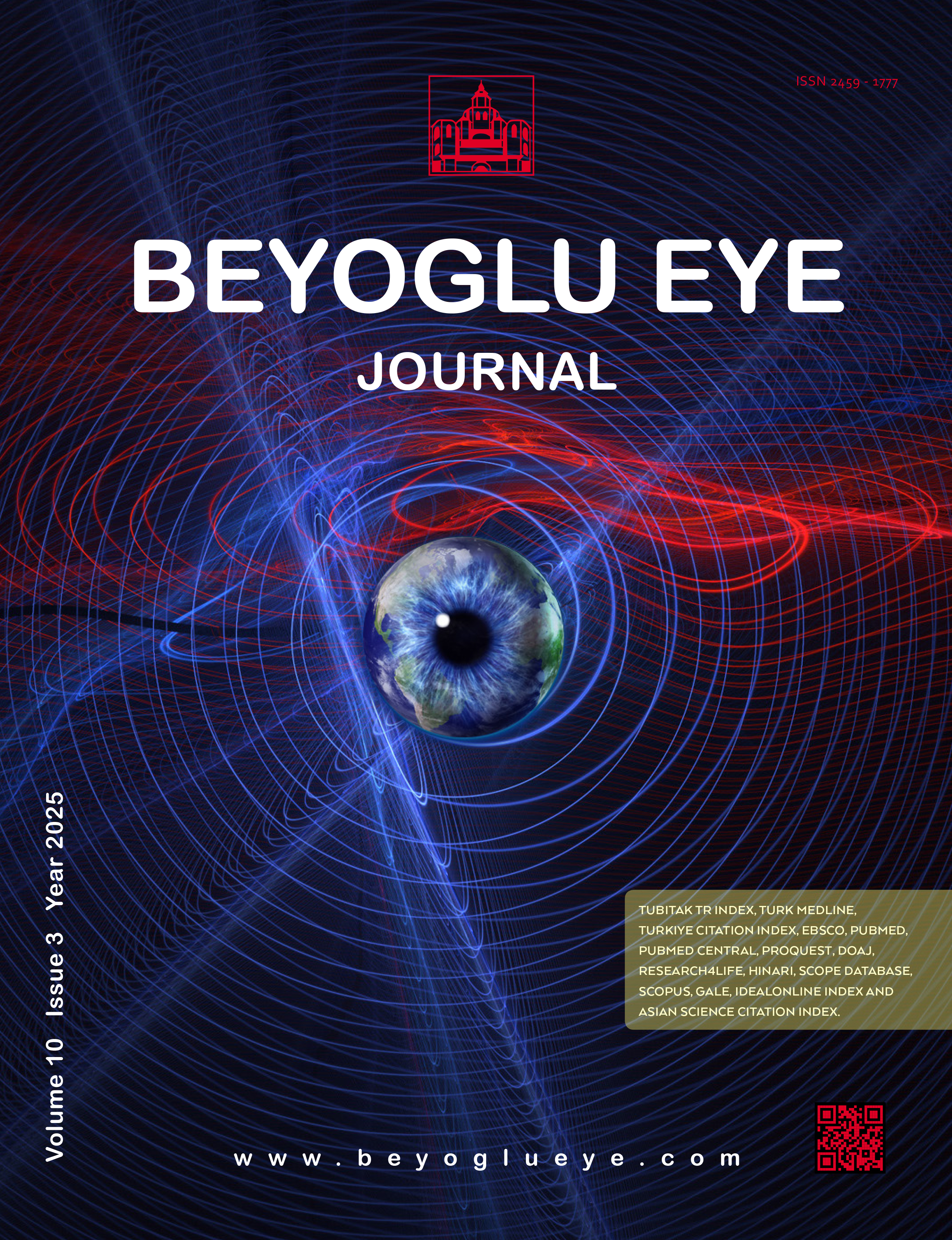
Retrospective Evaluation of Clinical, Demographic, and Radiological Data of Orbital Lymphoma Patients: A Single Tertiary Center Experience
Denizcan Ozizmirliler1, Burak Karakaya2, Aylin Yaman3, Meltem Soylev Bajin1, Suleyman Men4, Fatih Demirkan5, Guner Hayri Ozsan5, Canan Asli Utine61Department of Ophtalmology, Dokuz Eylul University, Izmir, Türkiye2Department of Internal Medicine, Polatli Duatepe State Hospital, Ankara, Türkiye
3Private Clinic, Izmir, Türkiye
4Department of Radiology, Dokuz Eylul University, Izmir, Türkiye
5Department of Hematology, Dokuz Eylul University, Izmir, Türkiye
6Izmir Biomedicine and Genome Center, Izmir, Türkiye
OBJECTIVES: The objective of the study was to present different clinical presentations, clinical and histopathological features, and treatment outcomes of intraorbital lymphoma.
METHODS: Medical records of 18 eyes of 17 patients with histopathologically proven diagnoses of intraorbital lymphoma at Dokuz Eylül University Ophthalmology Department, between 2007 and 2022, were reviewed retrospectively. The age, gender, location, laterality, stage, type of involvement, histopathological features, systemic involvement, recurrence, time from initial symptoms to diagnosis, follow-up time, and survival times were recorded. Visual acuities at the time of diagnosis and following treatment were evaluated.
RESULTS: The mean age of the patients was 63±19.11 (range: 1579, median age 65). The most common presenting findings were periorbital swelling, conjunctival mass, and ptosis. Periorbital region involvement was present in 10 of 17 cases (58.8%) and conjunctival involvement was present in 7 cases (41.2%). Biopsy samples were taken from all cases. Non-Hodgkin lymphoma was the most common type of lymphoma, whereas the most common histopatholog-ical diagnoses were marginal zone lymphoma and diffuse large B-cell lymphoma. One case was diagnosed with mature T-cell lymphoma. Nine cases had bone marrow involvement. While two cases refused treatment, two cases were not treated due to age and comorbid diseases. Nine cases received chemotherapy, two cases received radiotherapy (RT), 1 case received chemotherapy and RT, and one case received antibiotherapy treatment. In one case with proptosis and exposure keratitis, lateral canthatomy, temporary tarsorrhaphy, and aggressive topical treatment resulted in complete epithelialization of the cornea.
DISCUSSION AND CONCLUSION: Orbital lymphoma is a painless and slowly progressive clinical picture that requires high clinical suspicion because it is a common tumor of the orbit. Although clinical symptoms and findings vary according to the intraorbital location of lymphoma, patients should be examined for systemic involvement and followed up in a multidisciplinary manner.
Manuscript Language: English









